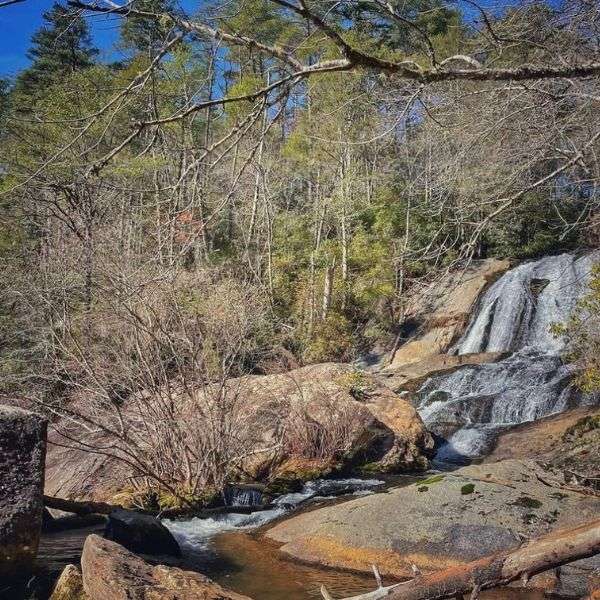“Go outside and play!”
-Mom
This is possibly the only phrase to have been bellowed by every parent since there has been an inside to go out of. What is out there? It is not difficult to imagine children returning to the stone hearths of antiquity; dirty-faced, tired, and ready for dinner, after having been out “there,” discovering whatever youthful mischief or adventure that can be conjured out of the minds of children. Our progeny have gone outside to play, reluctantly or with wild enthusiasm, to find their friends, or themselves; to define their social order, or sometimes to just to run through the sprinkler, since the beginning of time itself. Whatever the reason, every parent, at one point or another, has known that the answer is outside.
There is a great temptation, however, to stay inside. The modern world does present us with innumerable advancements that couldn’t have been imagined a generation ago, or even a couple of years ago. Yet, even with all of the tech ages now un-live-without-able conveniences, we can observe a whole host of new challenges, mostly presented to our children. In many ways, the youth of today engage in a huge portion of their community experience on social media. Why would they go outside if the most meaningful interaction can be had on “TweeterGram?” You’ve heard this topic being discussed in office break rooms or on coffee house couches. It starts like this: “When I was a kid…” The story evolves from there, into an infinite number of possible endings, descriptions of youthful experiences recalled, either with fondness or retold as if traveling to school was a Herculean Odyssey, or perhaps most commonly, with an earnest acknowledgment that today’s youth are living in a world of complexity and connectedness with challenges that those of us responsible adults with mortgages and 401Ks cannot possibly imagine.
Whether or not the evolution of technology has created more anxiety or depression, or attention deficits I suppose is up for debate. What seems certain, however, is that we are now more aware of it than ever. The irony in all of this is that the benefits of “going outside” have not changed in many hundreds of years. There are many ways for us to experience nature. Most of us enjoy a Sunday hike or a game of frisbee-golf in the park. Some of us are weekend warriors, imagining ourselves as modern Transcendentalists as we tromp through trails in the woods maintained by the parks department. But for those who seek real change, to achieve that apex experience that alters your course, your life; that can only be forged in the fire of the wild.
Using the wilderness as the venue for therapeutic interventions is not a new idea.
When the mental health world figured out what Muir and Thoreau knew all along we began to see therapists using the woods to create change. It was so effective, in fact, that a whole new model was created. Innovation and evolution occurred, processes improved, and paired with talented and devoted field guides and therapists, young people began to have that life-altering experience that had been lost for so many to the modern world. The simplicity of life in the wild gave perspective, knowledge, and respect. The adversity that naturally exists in the woods teaches resilience, determination, and grit, among other things.
The purest form of wilderness treatment is the Nomadic, or Immersion, Model.
The beauty (and efficacy) of the Nomadic Model is in its simplicity and, frankly, in the challenge that it provides. There are alternatives to the Nomadic Model. Most commonly, wilderness programs utilize a base camp, where weekly the participants return to a shelter with modern conveniences and comforts to rest and recover, take hot showers and take advantage of indoor plumbing.
Comfort is a tricky thing. We all desire comfort for ourselves and our loved ones. In fact, in many ways, comfort is the goal! But in seeking change, what is the role of comfort? It would seem that, for the youth in our charge, it has taken on a pathological quality. Therapists and treatment providers for generations have talked about optimal growth occurring outside the “comfort zone,” suggesting that going there will help create the conditions for change, which is what therapeutic work is really about.
So why take a break?
There could be many, seemingly obvious, reasons to return to the relative comfort of a base camp. Most commonly, families ask if having a base camp would be good for students to recharge and rest before returning to their journey afield. Without question, rest (particularly sleep) is a critically important part of any lifestyle. Comfort, however, is less important. Rest and sleep are both easily found in the Nomadic Model, as are warm meals, companionship, laughter, love, and safety. The difference is that students engaged in the Nomadic Model experience their journey in totality. They are always working towards their objective. The completion of their task, whether that be related to their specific therapeutic goals, or on building that night’s shelter, is the focus of their attention and their action. More importantly, the warm shower that waits in camp a few days from now is not their focus or their distraction.
One of the very important things that wilderness treatment does is break unhealthy patterns immediately, and it minimizes distractions.
The Nomadic Model demonstrates a shared commitment to the success of the student.
“I will come to where you are so that we can do our work together,” is the message that is given when a student’s therapist appears out of the woods to meet with them. “We will not disrupt your mission, we are here for you!”
Furthermore, in the woods we frequently observe the sheer resilience and capability of our students. The realization that one can do something that they (or their parents) were fairly certain was impossible just a few weeks ago has a power that cannot be manufactured in any office. To disrupt their environment is to disrupt their very mission: growth and change.
We know that our students are capable of this work.
We believe growth happens outside the “comfort zone,” and that comfortability can be a distraction from focus and change.
We believe in the healing power of nature.
We know that the experience we lead our students through is life-changing.
We believe the challenge that is naturally provided by the outdoors is the engine for that change.
I am often asked by potential families, “how do I know if my child needs to go to the wilderness?” The truth is, we all need it. Humans have an evolutionary desire to move and to produce. What more do we seek than the positive movement that will allow our children to grow up to be confident and productive in their world?
This is it. Add fuel to that fire. Be a Nomad.

